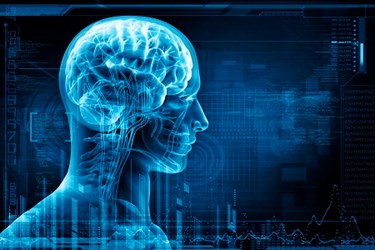Abbott Teams With Minnesota Researchers To Launch World's Largest Single-Centered TBI Study

Researchers at the Hennepin County Medical Center (HCMC) and the University of Minnesota (UM) are teaming with Abbott to launch what they are calling the “world’s largest single-centered traumatic brain injury (TBI) study.” Scientists will collect data from 9,000 patients and use it to investigate advanced TBI diagnostics, including digitized eye tracking technology, MRI techniques, and blood-based biomarkers.
The FDA recently hosted a public workshop to seek advice from both the public and private sectors on ways to advance TBI diagnostics — which currently rely on subjective tests that are prone to human error, and computerized tomography (CT) scans that do not always detect the problem. Recent research suggests there may be more accurate and objective methods to diagnose TBI.
Uzma Samadani — neurosurgeon and head of TBI research at HCMC, professor at UM, and co-investigator of the proposed study — believes there is no one best way to diagnose TBI, and that the best solution may be for doctors to combine several methods into a single TBI protocol.
“We know that there are different types of brain damage that can occur after trauma, whether it’s a mild concussion or a severe injury,” said Samadani in a press release. “Our goal with this study is to combine multiple assessment techniques to quickly assess the severity of brain injuries and enable clinicians to provide appropriate treatments.”
One possible assessment is computerized eye-tracking technology. While eye exams are included in the current standard of care, these subjective tests are conducted by healthcare providers without consistent or objective measurements. Samadani and her team propose a digitized system that uses sophisticated cameras to track patients’ eyes while they watch a short video.
Another proposed method, funded by the Minnesota Spinal Cord Injury and Traumatic Brain Injury Research Grant Program, will compare MRI to CT scans to determine what tell-tale signs of trauma are missed with CT and advanced MRI technology, which could detect more subtle signs of brain injury.
The study also will investigate blood-based biomarkers, which could be incorporated into a point-of-care (POC) device to detect signs of brain trauma by looking for certain proteins in the blood stream. Researchers hope to combine likely TBI biomarker candidates with Abbott’s i-STAT handheld diagnostic device.
Philips recently announced a multi-year partnership with Banyan Biomarkers to develop a similar POC device, using Philips’ handheld technology together with biomarkers isolated by Banyan. Banyan and GE — which is working on advanced TBI imaging techniques — were the only industry representatives presenting at the FDA’s recent public workshop covering TBI.
HCMC researchers will look at 9,000 patients of various ages who have suffered head injuries, ranging from a “mild” bump on the head to more severe, coma-inducing accidents. One thousand patients will be followed for a year to study their injuries’ long-term effects.
“Imaging tells us what the brain looks like, eye tracking tells us how well it’s working and blood-based biomarkers can tell us the nature of the damage,” said Thomas Bergman, co-investigator of the study. “When we put all of this information together, we will have a better understanding about brain injury that will help us treat patients now and in the future.”
.
